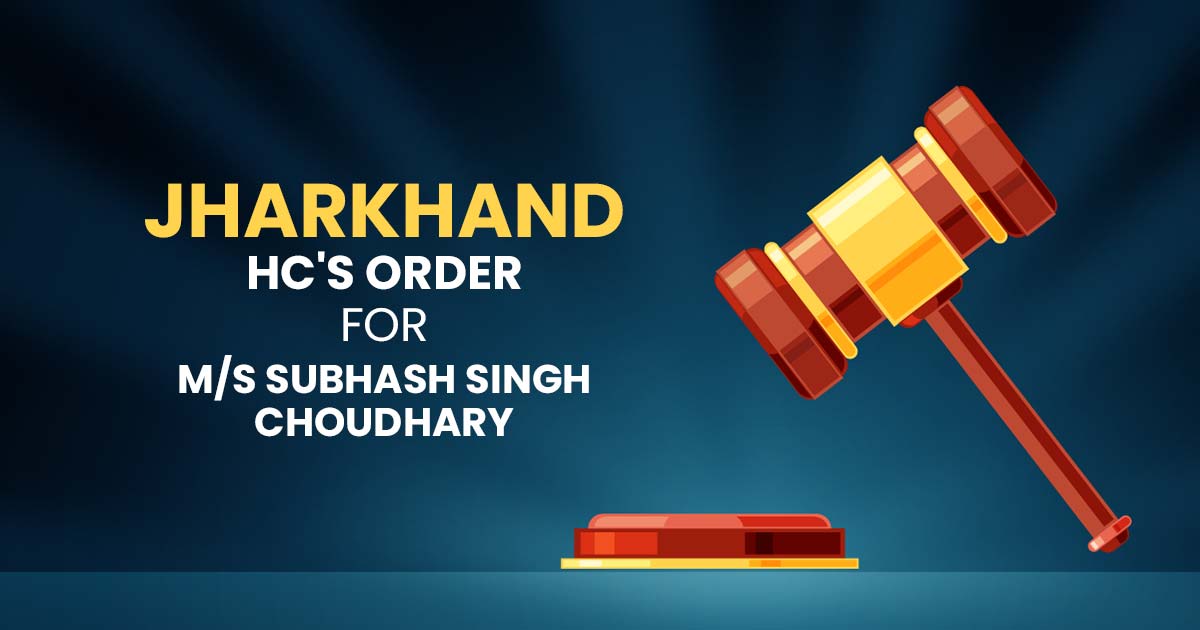
According to the Jharkhand High Court, the unadjusted TDS amount must be viewed as an input tax credit amount and must be carried forward.
The unadjusted TDS amount would have been otherwise refundable to the petitioners if it had not been permitted to be carried forward as an excess input tax credit in the statutory format of a quarterly return (Form JVAT 200), according to the division bench of Acting Chief Justice Aparesh Kumar Singh and Justice Deepak Roshan.
The petitioners had no choice but to send the unadjusted TDS amount as extra input tax credit in the next months at the time of filing their returns, the court ruled, and they were neither obligated nor compelled to obtain a refund of the unadjusted TDS amount.
In addition to selling machinery across the nation and in the State of Jharkhand, the petitioner/assessee also offers engineering, commissioning, and operational support services.
Once the Goods and Services Tax Act of 2017 went into effect, the petitioner was also properly registered under the terms of the GST Act. The petitioner had previously registered under the provisions of the Jharkhand Value Added Tax Act of 2005.
Prior to the appointed deadline, on June 30, 2017, the petitioner submitted its returns for the quarter that ended with an excess input tax credit. The sum was made up of unadjusted TDS deducted at source in accordance with Section 44 of the JVAT Act and excess ITC. According to Statutory Form JVAT-200, which is required for making quarterly returns, the total amount in the returned was carried forward as an excess ITC to the next period.
Beginning on July 1, 2017, the GST regime went into force. The petitioner was permitted to carry forward “credit of value added tax” under Section 140(1) of the JGST Act, which it indicated in its return just before the appointed deadline. As a result, on September 28, 2017, the petitioner submitted GST TRAN-1 online in the GSTN Portal to claim the transfer of the amount of credit for VAT.
However, the department claimed in a Summary of Show Cause Notice in Form GST-DRC-1 that the petitioner was not entitled to a migration of the VAT credit amount and ordered the petitioner to provide justification as to why the entire migration claim should not be denied and interest and penalties shouldn’t be levied against the petitioner for improper ITC utilization.
The petitioner contends that the unadjusted TDS deducted has always been regarded as the amount comparable to the input tax credit, even if it is accepted that Section 140 read with Rule 117 only permits the movement of the amount of GST ITC. Furthermore, under the GST system, the petitioners even have the right to move the TDS amount in their computerised credit ledger.
The department argued that the restriction in Section 140(1) clearly prohibits the movement of credits where the corresponding amount is not allowed as an input tax credit under the GST Act.
The court reasoned that proviso Clause (i) to Section 140(1) of the JGST Act only prohibits credit migration in cases where Section 17(5) of the GST Act expressly forbids claiming an input tax credit.
Read Also: Insurance Companies Can’t Deduct TDS on Interest on Payment to Claimant
The court ruled that the department’s decision to issue orders disallowing the movement of TDS amounts and, as a result, levying interest and penalties, was illegal and should be overturned. In accordance with Section 140(1) of the JGST Act, the petitioners are entitled to a migration of the TDS amount.
| Case Title | M/s Subhash Singh Choudhary Versus The State of Jharkhand |
| Citation | W.P.(T) No. 2404 of 2020 |
| Date | 09.01.2023 |
| Counsel For Petitioner | Sumeet Gadodia, Aakansha Mittal, Ranjeet Kushwaha, Surbhi Agarwal |
| Counsel For Respondent | Amrita Sinha |
| Jharkhand HC | Read Order |